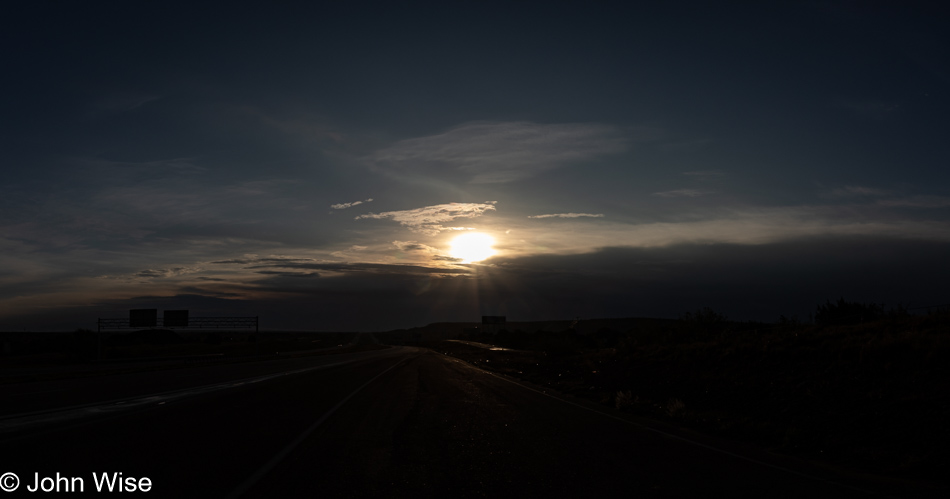
Last night, we were up for about 45 minutes, starting around 2.30, when we were woken up by the sound of heavy rains and hail pounding our motel. After about 20 intense minutes of storming, things seemed to settle down, and with that calm, we decided we could go back to sleep, but we had just put our heads back on the pillows when the door was being pelted again. In bed, I had considered moving the car under the awning at the closed motel office, but I was certain the storm had passed; oops, so much for my desire to remain dry inside our room, as vengeance was the name of part deux. During the next respite from the onslaught, I donned a shirt and shorts and drove the car under that small covered area. Too late as now the storm really was over, and as I’d later find out, we had about a dozen small dents adorning the roof and hood of our car. At least our glass is intact. By 6:30, we are back on the road, waiting for the sun to emerge from below a band of heavy clouds to the east.
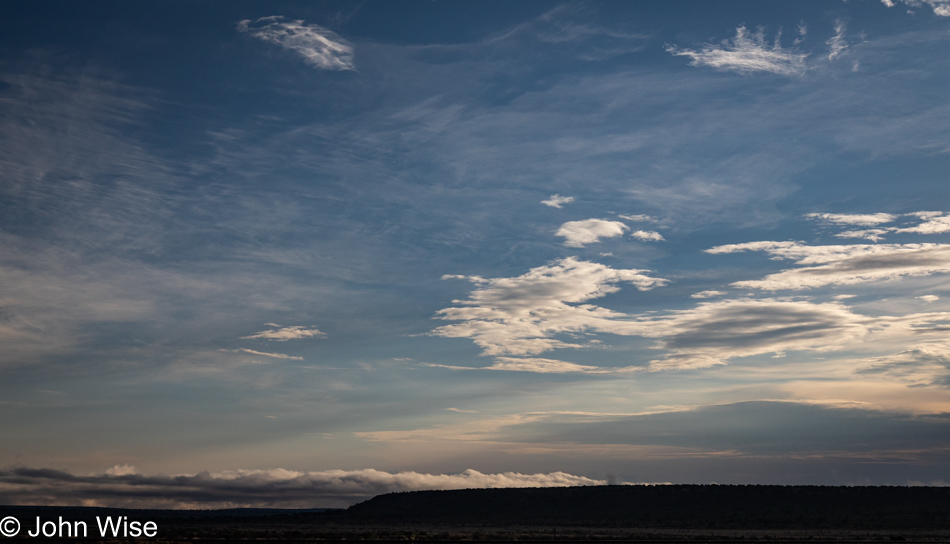
At the eastern side of New Mexico, it’s becoming obvious that we are transitioning to the Great Plains, hopefully not into Great Storms. Caroline broke out Wunderground.com in order to track where the weather was and where it was going as we chickens have no need for witnessing tornados near or far. We didn’t learn until later that crossing the Pecos River in Santa Rosa, New Mexico, is considered the rough edge of the plains; now we know.
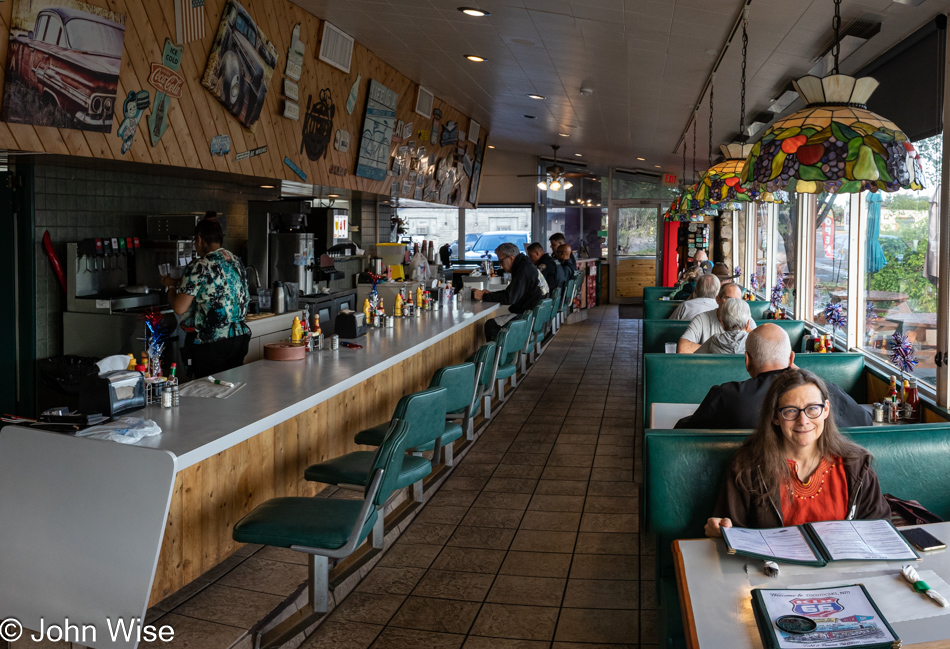
An hour down the road, we are pulling into Tucumcari, New Mexico, looking for breakfast, and we have a couple of options. The best choice was the classic Kix on 66 Diner that had all the nostalgic vibe one might want when road-tripping. I ordered the Night Owl special featuring a stuffed poblano with eggs and hashbrowns, and Caroline went for the Tucumcari Mountain Taters, hashbrowns smothered in green chili because, in New Mexico, you can’t go wrong when ordering anything bathed in green chili. Our server even filled our thermos with coffee for our continuing adventure. As for the town of Tucumcari, it’s in bad shape, though there are some efforts underway to revitalize things with a couple of trending motels making waves in the national media.
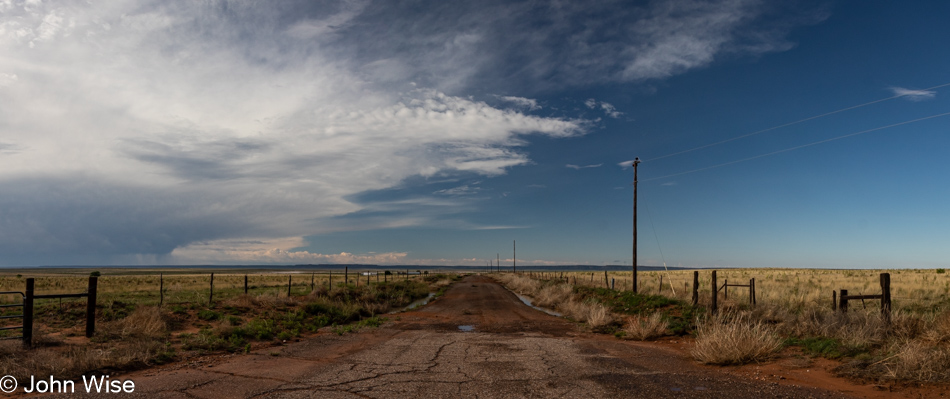
We left mid-day Thursday in order to beat the crush of holidaymakers as they begin the stampede into America’s recreation areas, and while we heard that there would be a record post-pandemic crush of travelers in the airports, those who travel by road are largely not out here. We are accustomed to seeing SUVs with stuffed back windows, motorhomes, and big trucks pulling 5th-wheel trailers as middle America heads into the countryside, but not this Memorial Day, at least not yet. Mind you, we would have dropped into Oklahoma City, Fargo, Omaha, or elsewhere had the flights not been so damned expensive. Add to the cost of flying the exorbitant rates at the chain hotels and Airbnb, and I’ll leave this lengthy road trip with the impression that a part of America is being priced out of travel. This matters because without people renting the old motels or eating at diners, those places will disappear and the prices for what remains will go up, and choices will go away until we are left with a homogenous landscape where big character is no longer found.
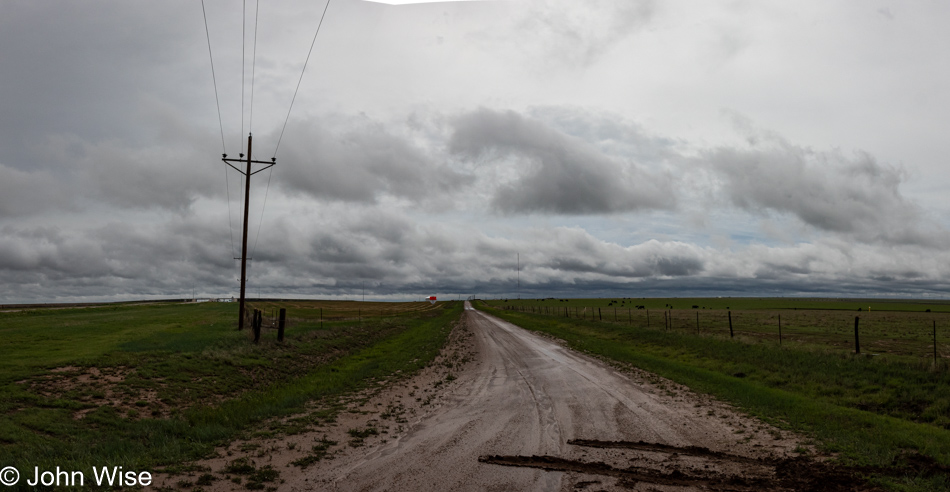
Oh, cool, a Google Streetview driver, no, you can’t see him in the photo. He was sitting next to the road here in Texas, considering his options after getting stuck in the mud as he attempted to record this road. We know this because he warned us not to head that way. No problem, we were only stopping to take in the view and avoid taking another photo from our moving car, which wasn’t exactly necessary as east of Amarillo, we’d left the interstate at Farm to Market Road 1912 and headed north to Route 60. There is no image of us at the Texas state sign because we were driving at over 70mph under a gray sky with no chance to pull over for selfies; that was at 8:30 New Mexico time or 9:30 Texas time (we have entered the Central Time Zone).

Have you ever been to White Deer, Texas? Who has, and yet many people dream of going to another planet or at least think of heading into San Diego, Miami, or some resort in Mexico because nothing is in White Deer, and nobody of any importance has ever spoken of hanging out in this town of less than 880 people. People of importance, a.k.a. The Influencer, will not put U.S. Route 60, built back in 1926, on anyone’s list of “Must See” attractions across America because Route 66 already holds the baton of importance for those looking for nostalgia. Well, here we are, using it as an escape from the ugly and anonymous Interstate 40 that we were able to escape from back in Amarillo. Would I recommend visiting White Deer? I would with caveats, we were simply passing through, so we couldn’t afford the time to check out anything other than this grain silo, our first on this particular venture into the heartland, so while there may be other things to take in, we can’t know due to time constraints imposed by our hoped-for destination. On the other hand, we have been informed by a roadside sign here in White Deer that “God is real.”

We turned around to photograph the Carniceria La Unica here in Pampa, Texas, as Caroline took a particular liking to the cow and pig painted on the old building. A block away, we stopped at the sign welcoming visitors to Pampa because Caroline wanted to send friends and family in Germany a photo because of the German idiom “In der Pampa,” which translates to “Being in the middle of nowhere.” The word originates in South America and refers to a lowland grassy plains area that was just carved out of earth only 10,000 years ago by retreating glaciers and is now the home of Buenos Aires, Argentina.

The other side of the Middle of Nowhere.

Seventeen years ago, we were traveling through here, here being Miami, Texas, not to be confused with Miami, Arizona, or Miami, Florida, and we’d swear this metal longhorn wasn’t here because had it been, this photo would be redundant. While we’d like to include Miami, Oklahoma, on this trip, it’s too far to the east to be practical, but someday…

The majority of roads on this trip so far we have traveled on before creating a minor situation that feels like the adventure hasn’t really begun yet. There are many roads we’ve plied plenty of times, and this feeling doesn’t exist, but on those journeys, we are often on our way to places with which we are already familiar. For me, I’m in giant anticipation of where we start going once we hit Woodward, Oklahoma.

We’ve made it back to Canadian, Texas, home of Arrington Ranch, where part of the Tom Hanks film Castaway was filmed and where we stayed back on the 4th-of-July weekend in 2006. While the old house is no longer rentable, the Cattle Exchange restaurant is still operating, and as luck would have it, they are open. I didn’t think I wanted a pound of ribeye for lunch, but who am I to argue with my gluttony? This old photo was taken by Julius Born from Canadian, who lived from 1879 to 1962, and is featured on one of the walls in the building where this steak house is found. Maybe we take it for granted that meat these days is refrigerated. Some things have changed here in Canadian and the Cattle Exchange, such as the Dough Girls bakery that used to make their rolls is long gone, so the bread pudding is different, and we were informed that after 134 years, the 4th of July rodeo may be skipped this year. Upon getting home and verifying things, it appears that the 135th 4th of July rodeo is, in fact, happening.

Those are the smiles of two travelers who are now under 60 miles from our turn north into the unknown absolute middle.

Would you believe it if we told you that here in Gage, Oklahoma, this brontosaurus was the most normal thing? This place is an alternative universe, and if you don’t believe that, stop in at the Sinclair gas station. More importantly, you must go into their convenience store and sit a spell; there’s something gravely wrong and part of that wrong could be that we are snobs and are unaccustomed to “real people.” As for this dinosaur made of old wheels, it is the creation of Jim Powers, whoever that is.

There it is, out there on the far horizon, the promised land of unknowns. We have turned left and are now traveling north on State Route 34 with an eye fixed on a point 991 miles (1595 km) ahead. In the middle of the road, in the middle of America, in the middle of a relationship where everything looks as perfect as can be. Let me be as clear as the sky is not; this perfection I reference is in regard to where we are on this adventure, where we are in life, and what is available to us. My observations about the larger world of the United States being mired in stupidity remain; the abhorrence I feel about dollar stores and poverty is being reinforced, witnessing the signs and hearing the words of American hate swirl around me every day. Remember, reader, I do not occupy my day with 8 hours of work. I do not watch television or distract myself with video games; I watch and listen to my fellow citizens nearly every day of the year. I observe where you shop, what you buy, and how you deride your children. To those of you who never see what I refer to, your enclaves of existence shield you from the middle of your country as you live in secure and wealthy corners, and the bottom of the class order you do have to witness is of the homeless and absolutely depraved while the middle is obscured in neighborhoods and on land you have no reason to ever see for yourself.
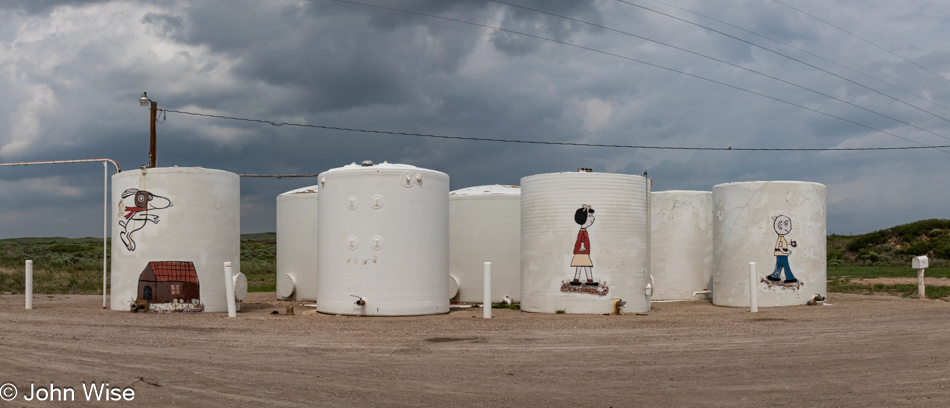
According to the interweb, this facility belongs to Cargill Salt and is found in Freedom, Oklahoma. We had to stop for the photo as it was one of the worst renditions of The Peanuts cartoon characters either of us had yet seen. It’s ironic that we live on such a beautiful land and extoll our freedoms while we remain collectively enslaved to outdated modalities of thinking where we voluntarily enslave ourselves and each other in nostalgia that deceives us into perceiving glorious pasts that are figments of our imaginations. We believe in nonsense that falls only slightly short of thinking that characters painted on the facades of things will somehow cover up the blemishes of our faults and weaknesses and do not miss the point that this was supposed to be a metaphor for what we adorn our bodies and faces with.

At what point in this blog does Dr. Alban’s 1990 hit Hello Afrika come to mind except you modify the lyrics with, “Hello America, tell me how yer doing.” Don’t worry if you stumble on the lyric about needing to “Unite and come together for our future,” as I, too can’t see how that will happen in our polarized country. The silver lining to this pubic outrage and obsession with shallow appearances is that Caroline and I have the entirety of so much of this land to ourselves, where we can embrace, sing, and dance our way into a celebratory life.

My desire to romanticize our potential is likely a naive weakness of mine as, for all I know, this home was a place of nightmares, just as this land is a place of nightmares for many. Why should I have these wishes for others to succeed and find happiness if I already found mine? How can it possibly matter to a 60-year-old man with options ahead of him to get what he wants if others are finding their own path or if they are crashing into a wall of disappointment and failure? Maybe empathy is a cruel joke on the animal that has softened due to lack of hardship after many a year, or is it an atrophying deep instinct to protect and project one’s tribe forward to better survive before the abandonment of life is encountered? Do we pass our home and treasures on to the next generation as things of value or do we lay waste to what has sustained us for so long?

Somewhere during the past year, and it’s being reinforced out here on the Great Plains this holiday weekend, it seems to us that communities with a strong attachment to tradition and god care more about their communities and the people that live in them. This evidence is weak and simple conjecture based on some random blips of thought that arrive out of thin air, and just as quickly as something plays to this idea, we pass through another town where god has forsaken the inhabitants and laid destitution upon their shoulders. Here in Coldwater, Kansas, the town center appears to still have some life left in it; keep praying, Coldwaterians.

Big dramatic clouds, a grain silo, and lush grasses at a crossroads, and I had everything required to stop for a photo to capture that sense of the Great Plains that draws me out here. With that, we were right back in motion, continuing to the north, except Caroline was stuck on her phone examining the map and Greensburg in particular. At the point we were about 7 miles away from the intersection, it was decided that we wouldn’t be deserving of the title of being nerds if we didn’t turn around, and so that’s just what we did based on what Caroline found. Sixteen years ago, Greensburg was taken off the face of the planet by the exhale of god who may not have been feeling the love of the people of this remote outpost. Some called it an EF5 tornado; I call it the smiting breath of our deity.

But it wasn’t the vengeful wrath of god that interested us; it was that the town’s butthole survived. Okay, enough of the blasphemous clowning around. The Big Well was the object of our curiosity. This is the world’s largest handgun well and an absolute specimen of tenacity combined with the insanity of people to risk their lives to establish a town in a place that wouldn’t ordinarily support life back in the late 19th century without water.

Clouds have been following us all day, but contrary to the weather forecast, they never rose to deliver storms upon our heads. Instead, they are acting as filters, offering us god rays that are as welcome as rainbows.

Of course, we were going to stop in a place called “Little Beauty,” which is what Schoenchen translates from German to. In the village proper was a steeple poking out of the surrounding town and trees offering the appearance that we were actually in Germany for a minute. Well, good thing we took the detour as we met this nice lady checking her mail who told us of a restaurant up in Kearney, Nebraska; we should try called Runza, sadly they’ll be closed by the time we arrive. She also told us how to pronounce Kearney, more about that in a moment.

Seems that we’ve been stopping a bit much for the photo opportunities, and that’s okay as it’s always been part of the loose itinerary that wherever it is we make it to, that will be good enough. We are currently in Stockton, Kansas, about 40 miles (64 km) from the Nebraska State Line.
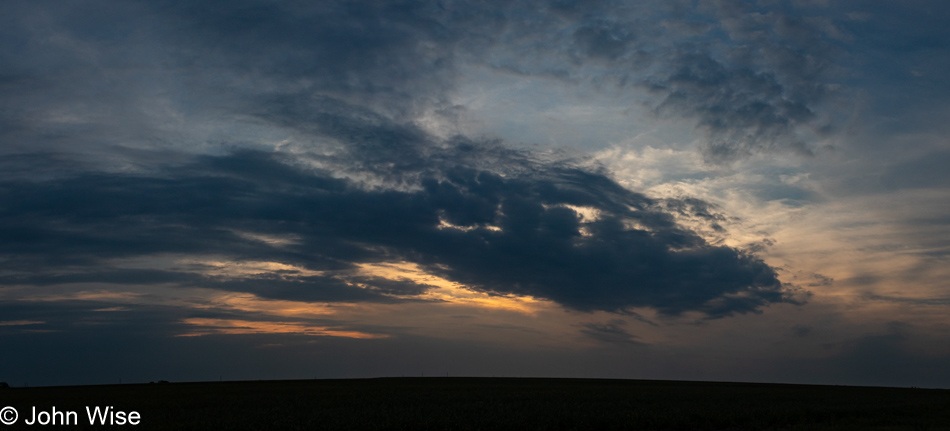
The end of our day is fast approaching, which is a good thing as after more than 14 hours and 600 miles of driving, I could use a break.

If we weren’t so far north by now, it would be dark as it’s 9:00 p.m. as we pass into Nebraska.
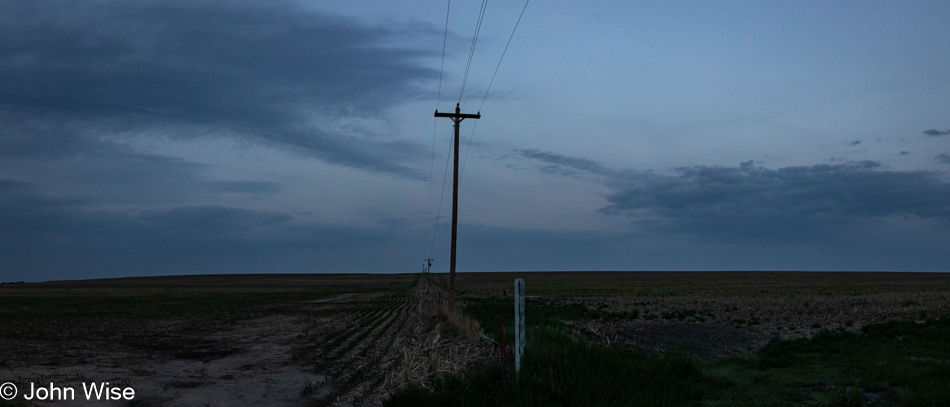
We are staying at the Midtown Western Inn in Kearney, Nebraska, for only $70, including tax. Contrary to our perception of how to pronounce Kearney, it is actually spoken as “Karnee,” named after Colonel Stephen Watts Kearny; the extra “e” was a postal error in registering the name of the new town. Someone once claimed that Kearney was 1,733 miles to Boston and 1,733 miles to San Francisco, placing it in a kind of middle, but it looks like someone was playing fast and loose with the map, though maybe back when the routing of the roads was different, Kearney was out in the middle of nowhere.